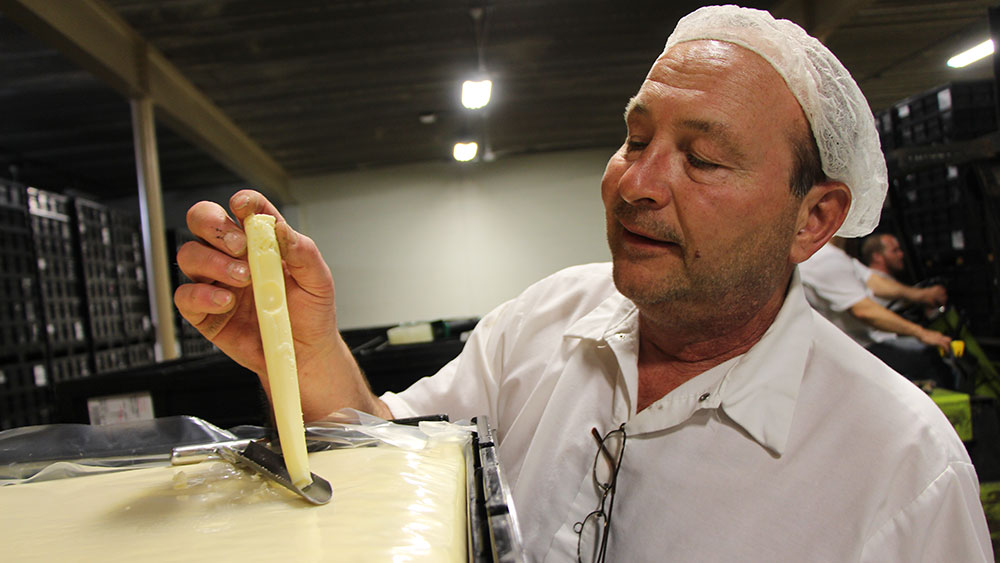Premier Cheese Makers in Melbourne: The Tale of Floridia Cheese Thomastown
Premier Cheese Makers in Melbourne: The Tale of Floridia Cheese Thomastown
Blog Article
Opening the Secrets of Artisanal Cheese Making: A Detailed Do It Yourself Guide
In the realm of cooking craftsmanship, artisanal cheese making stands as a testament to the fragile equilibrium between custom and innovation. Each action in the procedure, from picking the best milk to perfecting aging strategies, holds within it a wealth of expertise passed down through generations. As we start this trip to demystify the art of developing charming cheeses, we are confronted with a tapestry of keys and abilities waiting to be unwinded. Join us as we check out the intricacies of this ancient craft, where science, art, and patience merge to generate tastes that entice the detects.
Selecting the Right Milk
When starting the journey of artisanal cheese production, the option of milk plays a crucial role in determining the quality and characteristics of the end product. The sort of milk chosen affects the taste, appearance, and generally account of the cheese. Raw milk, straight from the pet, is liked by numerous artisanal cheesemakers because of its special mix of enzymes, germs, and flavor compounds. Using raw milk comes with regulations and threats, making pasteurized milk a safer choice for beginners.
When choosing milk for cheese production, it is necessary to consider the fat material. Greater fat material in milk can cause a creamier and richer cheese, while lower fat web content may bring about a drier and firmer appearance. Additionally, the resource of the milk, whether from cows, goats, lamb, or buffalo, contributes distinctive tastes and attributes to the cheese (Cheese Makers Melbourne). Each sort of milk brings its very own subtleties, enabling a large range of cheese ranges to be crafted based upon the chosen milk. Eventually, the option of milk is a fundamental decision that establishes the structure for a successful artisanal cheese-making endeavor.
Culturing and Coagulating
To initiate the cheese-making process, the important actions of culturing and coagulating must be thoroughly carried out to change milk right into curds and whey. Culturing entails introducing advantageous microorganisms to the milk, which then begins the fermentation process. These germs convert lactose (milk sugar) into lactic acid, creating the acidic environment necessary for coagulation. The type of society made use of can significantly impact the taste, structure, and ripening of the final cheese product.

The timing and temperature level control during culturing and coagulation are critical variables that influence the final end result of the cheese. Proper implementation of these steps is necessary to make certain the preferred texture, taste, and consistency of the artisanal cheese being created.
Draining and Pushing Curds
After the milk proteins have actually coagulated and the curds have actually been cut to launch whey, the next vital action in artisanal cheese making includes draining pipes and pressing the curds to attain the desired appearance and consistency of the last cheese product. Draining is the procedure of separating the curds from the whey. This can be done by moving the curds right into a cheesecloth-lined colander or mold and mildew and allowing the whey to drain off click here for more info normally. The time for draining can differ depending on the kind of cheese being made and the preferred moisture content.
Pushing assists get rid of any kind of continuing to be whey and compacts the curds to create a strong cheese wheel. Appropriate draining pipes and pressing are essential steps that significantly impact the top quality and features of the artisanal cheese being generated.
Aging and Flavor Methods
Executing precise aging and flavoring strategies is crucial in boosting the depth and complexity of artisanal cheeses, boosting their preference profiles to splendid levels of improvement and refinement. Aging plays a critical duty in establishing the distinct tastes and structures that differentiate artisanal cheeses. Throughout the aging process, cheeses are stored in carefully regulated atmospheres where factors such as temperature level, air flow, and moisture are adjusted to motivate the development of helpful molds and microorganisms. This controlled setting enables celebrity to mature gradually, developing complicated aromas and abundant tastes.
Seasoning techniques likewise add significantly to the final preference of artisanal cheeses. Cheesemakers might choose to introduce extra tastes by including ingredients such as herbs, flavors, or also fruits right into the cheese during the production process. Furthermore, some cheeses are cleaned or rubbed with various liquids, such as brine or alcohol, to improve their appearances and tastes.
Wrapping and Storing Cheeses

Conclusion
In final thought, understanding the art of artisanal cheese making includes check meticulously picking the appropriate milk, complying with exact culturing and coagulating procedures, draining and pressing curds properly, and utilizing different aging and flavor methods. Bear in mind to wrap and save your cheeses properly to guarantee ideal flavor and texture advancement.
Each type of milk brings its very own subtleties, permitting for a wide range of cheese selections to be crafted based on YOURURL.com the selected milk.After the milk healthy proteins have actually coagulated and the curds have actually been reduced to launch whey, the following essential step in artisanal cheese making involves draining and pushing the curds to attain the wanted appearance and uniformity of the last cheese product. A lot of cheeses need to be covered in wax paper or cheese paper to enable them to breathe while securing them from drying out. For cheeses that need to continue aging, such as bloomy peels or cleaned skins, ensure they are stored in a trendy atmosphere like a cheese cave or a fridge established to the proper temperature. By paying attention to the covering and storage space of artisanal cheeses, cheese manufacturers and lovers can preserve the stability of these delicacies and fully appreciate their complicated flavors.
Report this page